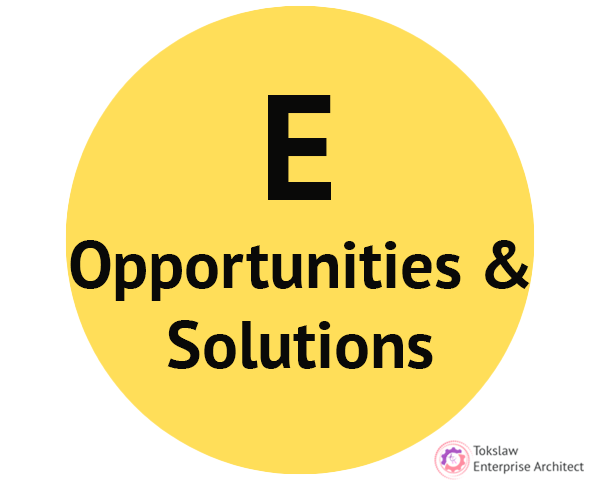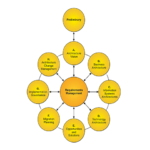Opportunities and Solutions
This phase represents a strategic moment in our architectural evolution, marking the halfway point in the ADM process. Its objective is triple-fold and sets the groundwork for our architectural roadmap and implementation strategies.
Creating the Architecture Roadmap
The first goal of Phase E is to generate the architecture roadmap. Here, we take stock of our GAAP (Generally Accepted Accounting Principles) analysis and begin to structure it into a coherent roadmap. This process requires us to sit down and consolidate all the insights gathered thus far. We need to differentiate between our baseline architecture, where we currently are, and the target architecture, where we aspire to be.
It’s important to recognize that transitioning from the baseline to the target architecture may not be achievable through a single project or deployment. Instead, we might need to develop transition architectures that will guide us along our pathway to the target state. We can identify specific projects or phases that will ease this transition by dissecting our journey into manageable steps.
Identifying Building Blocks
In pair with the roadmap, we also explore building blocks and reusable components within our architecture. Recognizing and defining these solution building blocks is critical, as it allows us to generalize some aspects for reuse in various parts of our organization.
Establishing Governance Models
Moving further into Phase E, we must revisit our governance models. This includes examining corporate business planning frameworks and project management methodologies and confirming whether we’re adhering to an agile approach or other established frameworks. It’s essential to incorporate inputs from previous phases (A to D) and consider any change requests that have been raised. Changes will occur throughout the project, and having a centralized change management process is crucial.
Understanding Business Constraints
In this phase, we must carefully evaluate the business constraints that may impact our implementation. For instance, if you’re in an industry characterized by seasonal demands, like retail during the holidays, understanding these constraints will be essential in effectively planning your deployments. By reviewing the GAAP analysis and consolidating all requirements, dependencies, and interoperability elements, we set the stage for informed decision-making.
Confirming Readiness for Transformation
A critical aspect of this phase is confirming our readiness for business transformation. This involves revisiting the assessments conducted in Phase A to gauge our ability to handle significant changes. Assessing risks and readiness ensures we proceed thoughtfully, mitigating potential issues before they impact our architecture roadmap.
Formulating Implementation Strategies
Next is the strategic formulation for implementation. This includes determining the needed resources, such as whether we must hire consultants or whether internal teams can handle the work. We need to think through the practicalities of this process: What are the quick wins? What challenges lie ahead? Should we tackle the most difficult aspects first?
It is crucial to break down the work into manageable packages. For example, if multiple transition architectures are necessary, we can categorize tasks into various phases, allowing for a streamlined implementation process.
Drafting the Migration Plan
At the culmination of Phase E, we consolidate our findings, creating draft architectures, requirements, and a migration plan. This roadmap outlines the transition from baseline architecture to target architecture. Although the document remains a draft, it serves as a foundational strategy for moving forward.
It’s important to note that while this phase produces few final artifacts, it sets the stage for Phase F, where collaboration with third parties and other teams will begin in earnest. This is a time for architects to gather their thoughts and shape plans before introducing them to the broader organization.
In summary, Phase E is an essential stepping stone in the ADM cycle, focusing on opportunities and solutions and laying down the architecture roadmap. By systematically reviewing our findings, understanding constraints, confirming readiness, and drafting our migration plans, we set ourselves up for successful implementation in the next phase. This preparation phase is vital for turning our architectural vision into reality.


